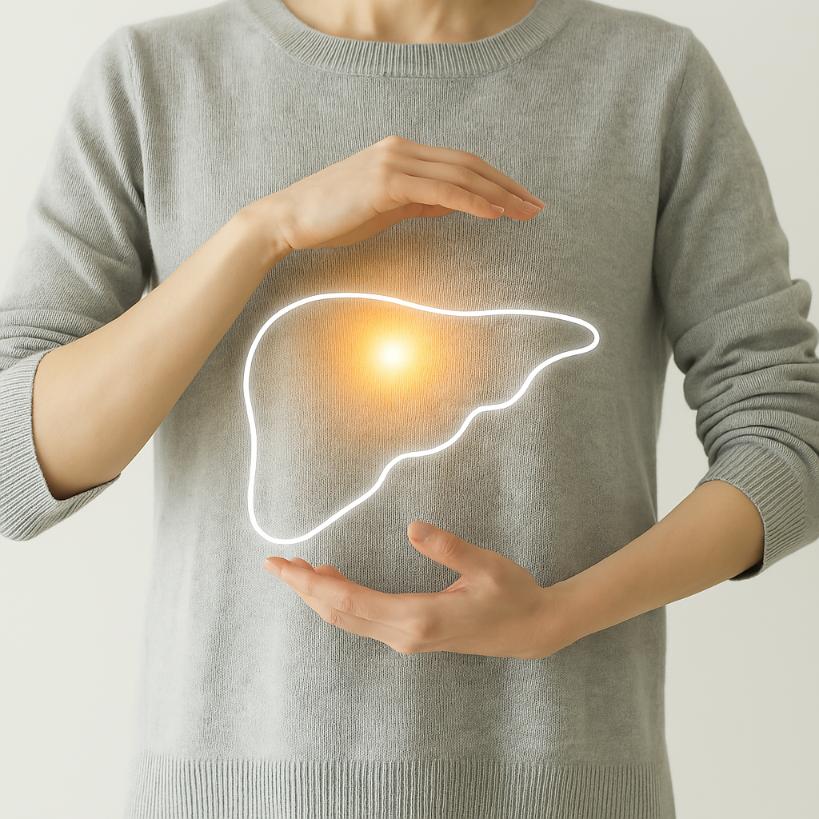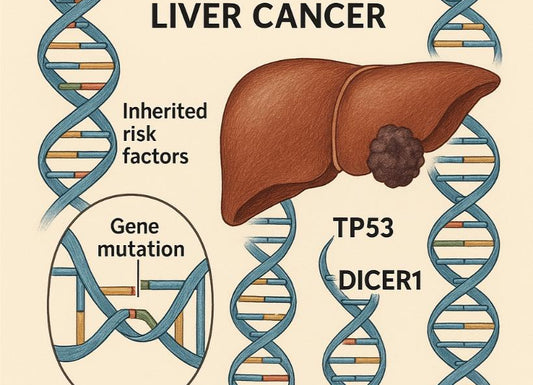Liver Reduction Diet
 Written By
Abel Tamirat, MD
Written By
Abel Tamirat, MD

When preparing for weight loss surgery, one of the most critical steps is following a liver reduction diet. This specialized diet helps shrink the liver to ensure a safer and more effective surgical process. A liver reduction diet isn’t just about weight loss; it’s about setting the stage for a successful surgical procedure by minimizing risks.
In this article, we’ll explore what the liver reduction diet is, why it’s needed, and how to follow it effectively. Understanding the liver reduction diet is essential for surgical success, whether you are considering bariatric surgery or any other weight loss procedure.
What Is a Liver Reduction Diet?
The liver reduction diet, also known as the liver shrinking diet, is a low-calorie eating plan designed to reduce the size of the liver. This diet is typically followed by individuals preparing for weight loss surgery, particularly bariatric surgery, such as gastric bypass or sleeve gastrectomy.
The Role of the Liver in Weight Loss Surgery
The liver is a large organ that plays a crucial role in the body’s metabolic processes, and its size can impact surgery. A large liver can obstruct the surgeon's view during surgery and limit access to the stomach, increasing the risks of complications during surgery. Shrinking the liver prior to surgery reduces these risks, making the procedure safer and more effective.
Why a Liver Reduction Diet Is Needed Before Surgery
Medical Reasons Behind Shrinking the Liver
When individuals are overweight or obese, the liver tends to become enlarged due to the accumulation of fat, a condition known as fatty liver disease or Non-alcoholic fatty liver disease(NAFLD). This condition makes the liver more difficult to maneuver during surgery, increasing the likelihood of bleeding and other complications.
The liver reduction diet helps reduce the fat in the liver, making it smaller and easier for the surgeon to work around. By shrinking the liver, the surgery can be performed with greater precision and fewer risks.
Potential Risks of Not Following the Liver Reduction Diet
Failing to follow the liver reduction diet can lead to complications such as:
-
Increased risk of bleeding during surgery.
-
Difficulty in accessing the stomach, leading to longer surgical times and sometimes switching to open rather than laparoscopic surgeries.
-
Higher likelihood of post-surgery complications like infections and blood clots.
-
Higher risk of injury to other organs during surgery.
-
Prolonged surgery recovery times.
How to Shrink Your Liver Before Weight Loss Surgery
Step-by-Step Process for Reducing Liver Size
To shrink the liver effectively, it’s essential to follow a step-by-step plan that is provided by your provider. These steps might include:
-
Adhere to a Low-Calorie Diet: A typical liver reduction diet involves significantly cutting down on calories to around 800-1,200 calories per day.
-
Increase Protein Intake: Protein is essential for preserving muscle mass while on a low-calorie diet. High-protein foods help maintain lean tissue, preventing muscle loss as you reduce fat.
-
Hydration is Key: Drink plenty of water throughout the day to stay hydrated, which aids in liver function and helps with digestion.
-
Avoid High-Carb and High-Fat Foods: Focus on whole foods, lean proteins, and low-carb vegetables while cutting out processed foods and sugars.
-
Incorporate Regular Exercise: If allowed by your doctor, incorporate light exercises like walking to help support overall fat loss.
Key Lifestyle Changes to Facilitate Liver Shrinking

-
Exercise Regularly: Light, consistent exercise helps with overall fat loss, including in the liver.
-
Stay Hydrated: Drinking water aids in digestion and liver function.
-
Limit Alcohol and Sugar: These can exacerbate liver fat accumulation and hinder the shrinking process.
Liver Shrinking Diet for Bariatric Surgery: Timeline and Expectations
Typical Timeline for the Liver Reduction Diet
The liver reduction diet is typically followed for two weeks before surgery. This gives enough time for the liver to shrink and become smaller, reducing risks during surgery.
Weight Loss Goals and Realistic Expectations
While some weight loss occurs on the liver reduction diet, the primary goal is not to lose weight but to shrink the liver. Patients should aim for a modest weight loss of 5-10% of their body weight during the liver shrinking phase.
How Fast Does the Liver Shrink on a Low-Calorie Diet?
The liver typically shrinks relatively quickly on a low-calorie diet, with noticeable reductions in size after just two weeks. However, individual results may vary depending on factors such as body type and metabolism.
Sample Liver Reduction Diet Plans
Two-Week Liver Reduction Diet Menu
A typical two-week liver shrinking diet includes:
-
Breakfast: A protein shake with almond milk, spinach, and berries.
-
Lunch: Grilled chicken with steamed broccoli and a small salad.
-
Dinner: Fish with sautéed spinach and cauliflower rice.
-
Snacks: Greek yogurt with a handful of nuts or a boiled egg.
Dietary Restrictions
For vegetarians or individuals with diabetes, here are some modifications:
-
Vegetarian Version: Replace animal proteins with plant-based options like tofu, legumes, and quinoa.
-
Diabetic Version: Focus on low-glycemic foods such as leafy greens, lean proteins, and non-starchy vegetables.
Caloric Intake and Nutritional Requirements
Liver Reduction Diet 800 Calories

An 800-calorie liver reduction diet is common for patients preparing for surgery. This calorie restriction is crucial in shrinking the liver, but it is important to ensure that the diet remains nutritionally balanced. Patients should focus on high-protein, low-carb foods to preserve muscle mass and prevent nutrient deficiencies.
Foods to Include and Avoid on a Liver Reduction Diet
Foods to Include
-
Lean proteins: Chicken, turkey, tofu, fish.
-
Vegetables: Leafy greens, broccoli, cauliflower, zucchini.
-
Low-glycemic fruits: Berries, apples, citrus fruits.
-
Healthy fats: Avocados, olive oil, nuts (in moderation).
Foods to Avoid
-
High-fat foods: Fried foods, fatty cuts of meat, dairy with high-fat content.
-
Sugary foods: Desserts, soft drinks, processed snacks.
-
Refined carbohydrates: White bread, pasta, and other foods made with refined flour.
Effective Meal Ideas and Recipes
High Protein Shakes for Liver Shrinking Diet
High-protein shakes are an excellent option for meal replacements or snacks. A typical shake might include:
-
1 scoop of protein powder (whey or plant-based).
-
1 cup almond milk or water.
-
A handful of spinach or kale.
-
1/2 banana or a handful of berries.
These shakes are quick to prepare, nutritious, and low in calories.
Liver Reduction Diet for Special Conditions
Liver Reduction Diet for Diabetics
Diabetic patients may need to follow a modified liver reduction diet to manage their blood sugar levels. Focus on foods that are high in fiber and protein while avoiding foods that cause blood sugar spikes.
Vegetarian Version of Liver Reduction Diet
Vegetarians can still follow the liver reduction diet by including plant-based protein sources like beans, lentils, tofu, and tempeh.
Comparing Liver Reduction Diet to Other Pre-Op Diets
Liver Shrinking Diet vs Pre-Op Liquid Diet
A liver shrinking diet is often compared to pre-op liquid diets. Both are designed to reduce liver size, but liquid diets may not provide the same balance of nutrients as the liver reduction diet, which includes whole foods.
Is VLCD the Same as Liver Reduction Diet?
VLCD (Very Low-Calorie Diet) shares similarities with the liver reduction diet but is generally used for more extreme weight loss purposes, often for patients with a BMI greater than 40.
Common Mistakes and How to Avoid Them
Some common mistakes include:
-
Not following the diet strictly: Straying from the prescribed calorie limits can prevent the liver from shrinking.
-
Skipping meals or not eating enough protein: This can result in muscle loss and hinder the liver shrinking process.
Tips for Success
-
Stick to your calorie limits.
-
Focus on high-protein meals.
-
Hydrate properly.
-
Consult your surgeon regularly.
Consulting with Healthcare Providers
It is essential to consult with your surgeon and dietitian before starting the liver reduction diet. They will provide tailored guidance and help you follow the best plan for your specific needs.
Conclusion: Achieving Success with the Liver Reduction Diet
The liver reduction diet plays a critical role in the success of weight loss surgeries. By following a structured, low-calorie eating plan, you can shrink your liver, reduce surgery risks, and set yourself up for long-term success. Remember, always consult with your healthcare provider before starting any diet plan.
Frequently Asked Questions (FAQs)
What happens if you don’t follow the liver reduction diet?
If you don’t follow the liver reduction diet, you risk complications during surgery, including excessive bleeding and difficulty accessing the stomach.
How much weight can I expect to lose on the liver reduction diet?
Most patients lose about 5-10% of their body weight during the two weeks of the liver shrinking phase, although this is not the primary goal.
Can I drink coffee while on the liver reduction diet?
You can drink coffee, but avoid sugary additives. Stick to black coffee or coffee with a small amount of milk or almond milk.
What are the signs that my liver has shrunk enough?
Typically, your surgeon will assess the liver’s size through imaging or manual examination. You may also notice a reduction in bloating and discomfort.
How long does it take for the liver to shrink on a low-calorie diet?
It usually takes around two weeks of following a low-calorie diet to see noticeable liver shrinkage.
Written by Abel Tamirat, MD
Dr. Abel Tamirat is a licensed General Practitioner and ECFMG-certified international medical graduate with over three years of experience supporting U.S.-based telehealth and primary care practices. As a freelance medical writer and Virtual Clinical Support Specialist, he blends frontline clinical expertise with a passion for health technology and evidence-based content. He is also a contributor to Continuing Medical Education (CME) programs.
Related Resources
- Metastatic Liver Cancer: Symptoms, Diagnosis, Treatment, and Prognosis
- Liver Cancer Stages
- Liver Lesions: Causes, Diagnosis, and Treatment Options
References
Abbott, S., Price, C., Pournaras, D. J., & Coulman, K. (2023). Variation and outcomes of liver-reducing dietary regimens before bariatric surgery: a national retrospective cohort study. Surgery for Obesity and Related Diseases, 19(2), 102–108. https://doi.org/10.1016/j.soard.2022.10.027
Lefere, S., Onghena, L., Vanlander, A., van Nieuwenhove, Y., Devisscher, L., & Geerts, A. (2021). Bariatric surgery and the liver—Mechanisms, benefits, and risks. Obesity Reviews, 22(9). https://doi.org/10.1111/obr.13294
Liver reduction diet for surgery - University Hospitals Sussex NHS Foundation Trust. (2023, March 27). University Hospitals Sussex NHS Foundation Trust. https://www.uhsussex.nhs.uk/resources/liver-reduction-diet-for-surgery-2/
Liver shrinkage diet for Bariatric Surgery. (2025). Chelsea and Westminster Hospital NHS Foundation Trust. https://www.chelwest.nhs.uk/your-visit/patient-leaflets/bariatric-dietetics/liver-shrinkage-diet-for-bariatric-surgery

Dr. Abel Tamirat is a licensed General Practitioner and ECFMG-certified international medical graduate with over three years of experience supporting U.S.-based telehealth and primary care practices. As a freelance medical writer and Virtual Clinical Support Specialist, he blends frontline clinical expertise with a passion for health technology and evidence-based content. He is also a contributor to Continuing Medical Education (CME) programs.



